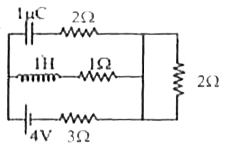The tissue that stores energy for future use is:
ligament
adipose tissue
areolar tissue
cartilage
To answer the question "The tissue that stores energy for future use is:", we can follow these steps:
Step 1: Understand the Question
The question is asking for a specific type of tissue that is responsible for storing energy in the body for future use.
Step 2: Analyze the Options
The options provided are:
1. Ligament
2. Adipose tissue
3. Areolar tissue
4. Cartilage
Step 3: Evaluate Each Option
- Ligament: This tissue connects bones to other bones and does not store energy.
- Adipose tissue: This is a type of connective tissue that stores fat. It serves as an energy reserve and provides insulation and cushioning for organs.
- Areolar tissue: This tissue supports and binds other tissues. It does not primarily store energy but helps in the repair of tissues and fills spaces.
- Cartilage: This is a flexible connective tissue that provides support and structure but does not store energy.
Step 4: Identify the Correct Answer
From the analysis, adipose tissue is the only tissue that is specifically designed to store energy in the form of fat. Therefore, the correct answer is Adipose tissue.
Final Answer
The tissue that stores energy for future use is Adipose tissue.
---
The question is asking for a specific type of tissue that is responsible for storing energy in the body for future use.
The options provided are:
1. Ligament
2. Adipose tissue
3. Areolar tissue
4. Cartilage
- Ligament: This tissue connects bones to other bones and does not store energy.
- Adipose tissue: This is a type of connective tissue that stores fat. It serves as an energy reserve and provides insulation and cushioning for organs.
- Areolar tissue: This tissue supports and binds other tissues. It does not primarily store energy but helps in the repair of tissues and fills spaces.
- Cartilage: This is a flexible connective tissue that provides support and structure but does not store energy.
From the analysis, adipose tissue is the only tissue that is specifically designed to store energy in the form of fat. Therefore, the correct answer is Adipose tissue.
The tissue that stores energy for future use is Adipose tissue.
Topper's Solved these Questions
- MODEL TEST PAPER IBOOK - ICSECHAPTER - MODEL TEST PAPER IEXERCISE - SECTION I (MATCH THE COLUMN)
1 Videos
- MODEL TEST PAPER IBOOK - ICSECHAPTER - MODEL TEST PAPER IEXERCISE - SECTION I
11 Videos
- MODEL TEST PAPER IBOOK - ICSECHAPTER - MODEL TEST PAPER IEXERCISE - SECTION II (GIVE THE BIOLOGICAL TERM FOR THE FOLLOWING)
9 Videos
- KINGDOM CLASSIFICATION IIBOOK - ICSECHAPTER - KINGDOM CLASSIFICATION IIEXERCISE - EXERCISES (SECTION II (LONG ANSWER QUESTIONS))
5 Videos
- MODEL TEST PAPER IIBOOK - ICSECHAPTER - MODEL TEST PAPER IIEXERCISE - SECTION II
57 Videos
Similar Questions
Knowledge Check
If an animal needed to store energy for long-term use, but not be encumbered with the weight of extra tissue, which is the best molecule for storage?
AFructose and glucose in the form of honeyBHigh-calorie fat moleculesCComplex cellulose moleculesDGlycogen with extensive side branches of glucose
An inductor may store energy in
View SolutionName the following.
(a) Tissue that forms the inner lining of our mouth.
(b) Tissue that connects muscle to bone in humans.
(c) Tissue that transports food in plants.
(d) Tissue that stores fat in our body.
(e) Connective tissue with a fluid matrix.
(f) Tissue present in the brain.
View SolutionRainwater harvesting is a process of collecting and storing ____ for future use.
View SolutionThe energy stored in the condenser is
View SolutionIn the steady state of the circuit shown in the figure the ratio of energy stored in the inductor to th energy stored in the capacitor is 1000000.

View SolutionA capacitor of capacity C hasd charge Q and stored energy is W. if the charge is increased to 2Q, then the stored energy will be
View SolutionA capacitor is charge until it stores an energy of 1J. A second uncharged capacitor is connected to it, so that charge districutes equally. The final energy stored in the second capacitor is
View Solution
